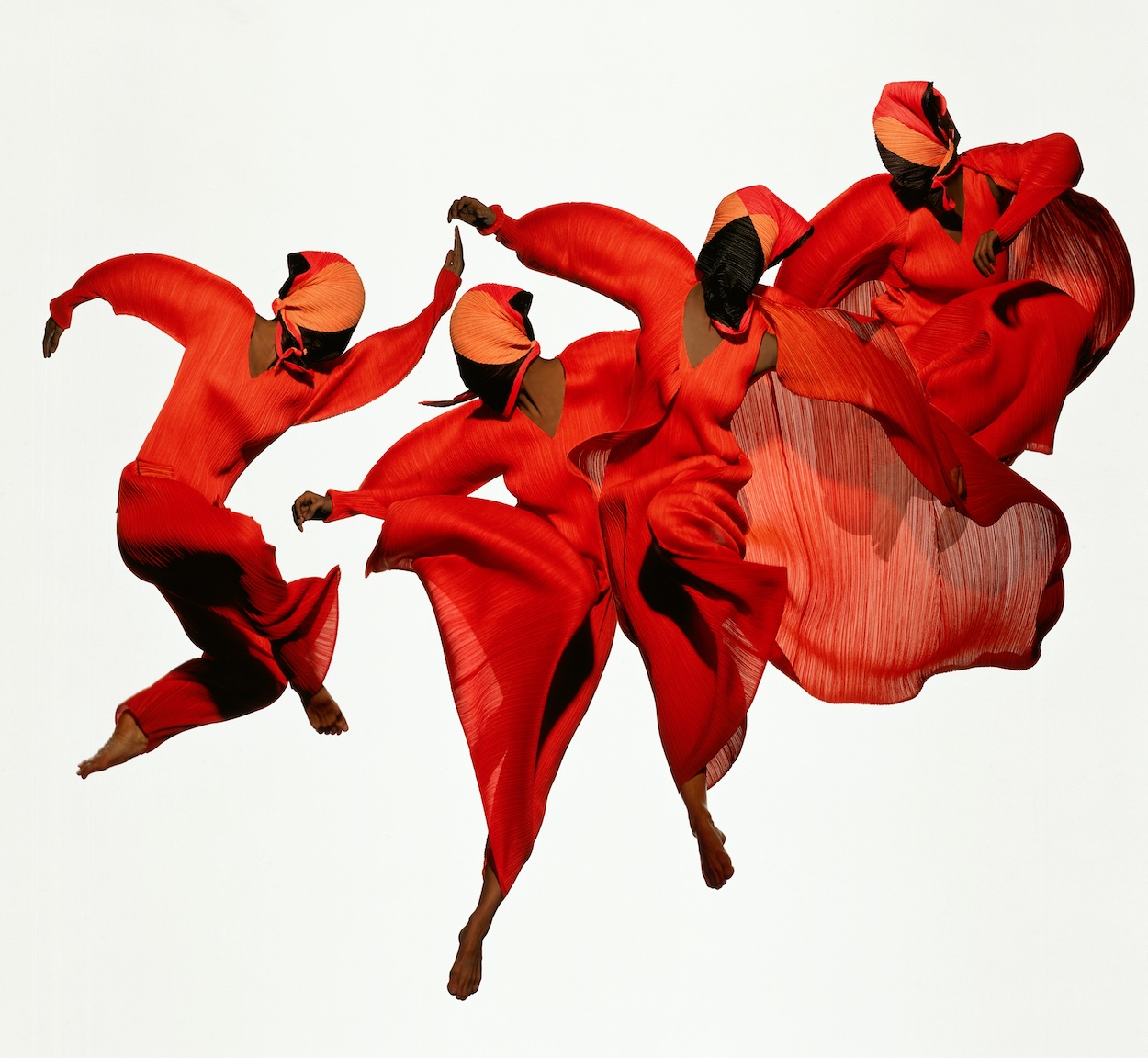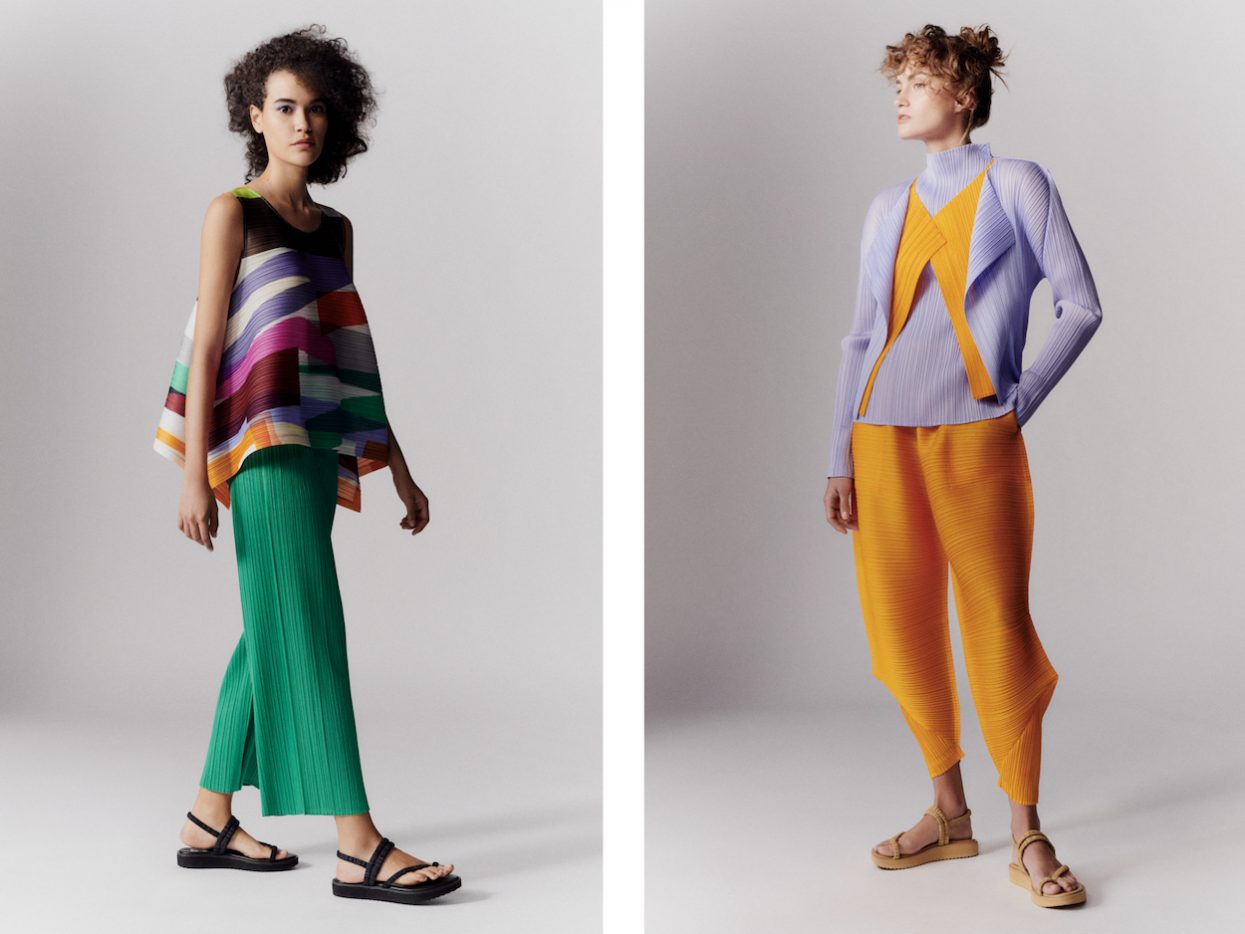In 1988, Issey Miyake’s career reached a zenith. The barrier-breaking couturier was one of the first Japanese designers to show in Paris, shortly after launching the Miyake Design Studio in 1970 following stints working for Hubert de Givenchy and Guy Laroche. Unmoved by his rapid rise to fame, Miyake remained steadfast that clothing was a form of art—an unmistakably avant-garde perspective for the ‘80s, but one that landed his designs on a 1982 cover of Artforum and earned his eponymous house consistent praise. After the Musée des Arts Decoratifs staged a retrospective of his prodigious ready-to-wear in 1988, he believed he accomplished everything he could.
That was until he stumbled upon a folded scarf in his studio. His longtime textile designer, Makiko Minagawa, heat-pleated the cloth as an experiment with new materials. Miyake was captivated by its intricate, three-dimensional texture and sought to recreate a comfortable, breathable, and easily movable textile, jumpstarting four years of research that culminated in what would become his label’s signature technique. Polyester fabric is cut and sewn at three times its intended size and heat-pleated, creating accordion folds that retain their shape and resist wrinkles even after being tossed in the washing machine or scrunched up in a suitcase.


